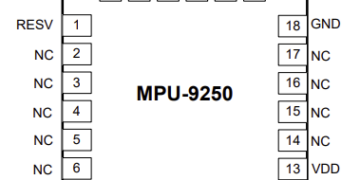
Raspberry Pi Compute Module 4S SC01762
Going from idea or a set of desired performance objectives to a buildable circuit board can seem daunting. The greatest challenges are determining what components to use and how to best layout your board. Even seasoned engineers can be paused on questions like whether to use surface mount or through hole components or how to arrange RF components and route antenna traces to maximize signal transmission, while minimizing electromagnetic interference (EMI).
One of the best ways to simplify the complex and often time consuming process of new product design is to leverage a proven PCB architecture. Probably, the most popular choice for engineers is leverage one of the Raspberry Pi single-board computer platforms. And the Raspberry Pi Compute Module 4S (CM4S) datasheet provides the essential design data needed to help you quickly incorporate one of the most capable of these computer boards to expedite your electronic product development.
Raspberry Pi Compute Module 4S Datasheet: Specifications
The Raspberry Pi Compute Module 4S (CM4S), an evolution of the CM4, is a series of compact modules designed to provide more deployment flexibility. Key specifications are listed below.
RASPBERRY Pi COMPUTE MODULE 4S SPECIFICATIONS | |
Specification | Description/Value |
| Type of kit | SOM |
| Manufacturer series | Compute Module 4S |
| Kind of architecture | Cortex A72 |
| Processor | BCM2711 |
| Clock frequency | 1.5 GHz |
| Kind of connector | SO DIMM 200 |
| RAM* | 1…8 GB |
| Flash Memory* | 8…32 MHz |
| Video coding | H.264, H.265, OpenGL ES 3.0 |
| Dimensions | 67.6 x 31mm |
* depending on the model
As indicated in the table above and defined in the datasheet, the CM4S series devices vary in RAM and flash memory to provide PCB designers with a range of options to expedite the design and development process.
Raspberry Pi Compute Module 4S: Features and Capabilities
Raspberry Pi is a popular computing platform, which has become incredibly popular with technology enthusiasts, hobbyists, educators, as well as professionals. Thanks to its compact size, affordable price and versatility, the Raspberry Pi has become a perfect tool for exploring the world of programming, creating various projects and developing a multitude of applications and systems. TME Electronic Components, a well-known resource for common and advanced parts, has recently expanded its catalogue to include a wide range of new Raspberry Pi products, including Compute Module 4S (CM4S) models.
Compute Module boards are compact versions of Raspberry Pi (RPi) single-board computers (in this case Generation 4, model B), stripped of standard connectors. Instead, they are fitted with a comprehensive port that offers extensive capabilities (including typical interfaces, such as USB and HDMI), thanks to which designers/developers can create a miniaturized device circuit and at the same time enjoy the convenience and versatility offered by RPi. As shown in the Raspberry Pi Compute Module 4S datasheet, the CM4S comes in the SODIMM size, hence all you need to embed the PCB in the target circuit is a regular RAM socket.
The heart of the CM4S is the Broadcom BCM2711 chip, which features a quad-core ARM Cortex-A72 CPU clocked at up to 1.5 GHz – a solution that provides significant computing power in a compact form factor. The CM4S is available in various configurations of RAM: 1 GB, 2 GB, 4 GB, or 8 GB. Unlike full-size models, these boards can be equipped with integrated eMMC mass storage (8 GB, 16 GB, or 32 GB). This gives the PCB designer a wide range of options for tailoring the device to suit the needs of various projects.
PCB Design with the RPi CM4S Datasheet
Note that, unlike the CM4, the Compute Module 4S is not equipped with a Wi-Fi or Bluetooth wireless connectivity module. Nonetheless, it supports HDMI, I2C, MIPI (CSI for camera and DSI for display), PCM, PWM, SPI, UART and USB (2.0) interfaces. This selection of ports creates the possibility of connecting a wide range of peripherals, including, of course, communication modules.
The RPi CM4S datasheet provides essential information for designing larger PCBs and embedded systems that incorporate this device; such as pinout and physical dimensions. Additionally, interface specifications are included for each of the data communication options and multiple GPIOs to aid designers in effectively laying out their product design. Unfortunately, the datasheet does not include accessible CAD models. For these design elements, the best option is to rely on the industry leader, UL, to build accurate downloadable models for your format requirements to ensure your design is in compliance with manufacturer specifications.
If you’re looking for CAD models for common components or important information like how to maximally leverage the Raspberry Pi Compute Module 4S datasheet for your project development, Ultra Librarian helps by compiling all your sourcing and CAD information in one place.
Working with Ultra Librarian sets up your team for success to ensure streamlined and error-free design, production, and sourcing. Register today for free.








